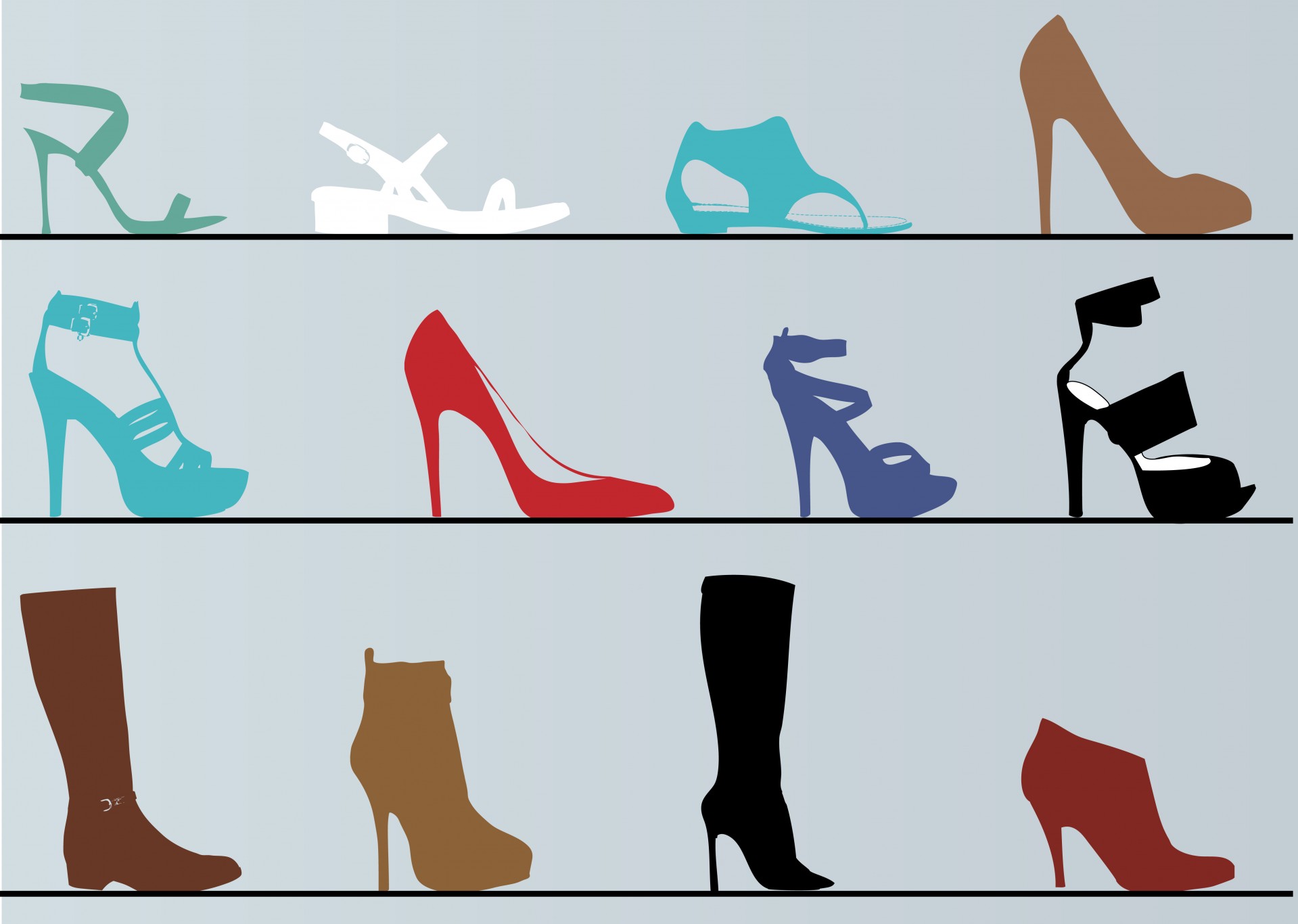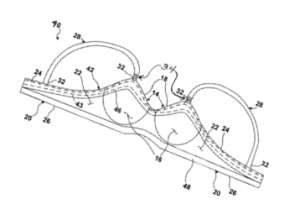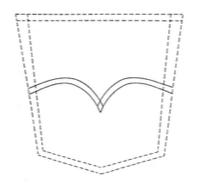
IP in Fashion
Intellectual Property Attorneys are constantly asked whether fashion is considered intellectual property, and can it be protected. First, fashion absolutely is considered intellectual property. Intellectual property is any creation of the mind including such things as inventions, literary and artistic works, symbols, names, images, plays, etc.1 Fashion is a creative expression conjured by an artist that is turned into a physical item, thereby making it intellectual property. Since intellectual property is protectable, fashion by its nature is protectable.
Fashion, however, does not fall into one neat category of intellectual property, it can be either a copyright, a trademark, or a patent, or even multiple ones of them at once. As discussed in the previous blog titled “Understand Patents, Copyrights, and Trademarks,” patents cover machines, manufactured articles, industrial processes, and compositions of matters, a trademark is a word, name, symbol, sound, design, or color that distinguishes goods, and a copyright is a work that has been tangible expressed such as writings, artwork, and music.2
 Fashion related patents can be seen throughout the fashion world. A single mom, Katerina Pew, from Long Island, created and patented a bra solving an issue she was having, along with so many other woman, of showing bra straps when wearing certain outfits.3 She presented the idea to Victoria’s Secret, but nothing came of it, until she walked into a Victoria’s Secret store a year later and saw the 100-way strapless convertible bra, which she claimed was a rip-off of her patented bra. Pew sued Victoria’s Secret for infringement, but whether Victoria’s Secret actually stole Katerina Pew’s idea was never determined, since the parties settled before the case got to court.
Fashion related patents can be seen throughout the fashion world. A single mom, Katerina Pew, from Long Island, created and patented a bra solving an issue she was having, along with so many other woman, of showing bra straps when wearing certain outfits.3 She presented the idea to Victoria’s Secret, but nothing came of it, until she walked into a Victoria’s Secret store a year later and saw the 100-way strapless convertible bra, which she claimed was a rip-off of her patented bra. Pew sued Victoria’s Secret for infringement, but whether Victoria’s Secret actually stole Katerina Pew’s idea was never determined, since the parties settled before the case got to court.
 Patents protect designers throughout the fashion industry not just with complex articles like the bra discussed above, but even this simple purse design with a unique stitching pattern. The distinctiveness of the stitching on this handbag set it aside from others and allowed it to obtain patent protection.4
Patents protect designers throughout the fashion industry not just with complex articles like the bra discussed above, but even this simple purse design with a unique stitching pattern. The distinctiveness of the stitching on this handbag set it aside from others and allowed it to obtain patent protection.4
 While some may think it would be obvious that trademarks play a role in the fashion world. It is obvious that name of the designer, the company’s name, and the names of product lines would all be protectable through trademarks, what is not obvious is how much more trademarks can protect than just names. Trademarks extend to more than just names and brands, they can extend to components of the apparel and accessories. Louboutin’s red sole, is a great example of a trademark in the fashion industry. The French designer was successful in protecting his famous red sole by obtaining a trademark for it. Perhaps an even more famous trademark than Louboutin’s red sole, is Levi Strauss’ signature seagull-like denim stitching found on the back pockets of its jeans.5 Levi’s distinctive stitching was first used over 130 years and the company has been fighting to prevent others from infringing on its mark ever since.
While some may think it would be obvious that trademarks play a role in the fashion world. It is obvious that name of the designer, the company’s name, and the names of product lines would all be protectable through trademarks, what is not obvious is how much more trademarks can protect than just names. Trademarks extend to more than just names and brands, they can extend to components of the apparel and accessories. Louboutin’s red sole, is a great example of a trademark in the fashion industry. The French designer was successful in protecting his famous red sole by obtaining a trademark for it. Perhaps an even more famous trademark than Louboutin’s red sole, is Levi Strauss’ signature seagull-like denim stitching found on the back pockets of its jeans.5 Levi’s distinctive stitching was first used over 130 years and the company has been fighting to prevent others from infringing on its mark ever since.

Copyrights in the fashion world have caused quite a lot of confusion and drama, because copyrights do not protect useful articles and since clothing is useful it cannot be protected by a copyright. However, if the design of a useful article can be identified separately from and is capable of existing independently of the utilitarian aspects of the article, then the design component is copyrightable.6 Fabric patterns are a great example of copyrightable material in the fashion industry. In 2014 a large fabric company, Novelty Textile, was awarded $650,000 after a clothing manufacturer, Hot Shot HK, infringed on several of Novelty Textile’s copyrighted fabric designs. Novelty Textile copyrighted the designs in 2012 prior to when they were shown to Hot Shot HK. However, right after Hot Shot HK placed an order to purchase the fabric from Novelty Textile it cancelled the order and hired a textile company in China duplicate Novelty Textile’s designs. While it is well established that copyright protect does not extend to useful articles an exception has been carved out for jewelry. Jewelry designs are typically protected by the Copyright Act as sculptural works.7
Intellectual property law plays a big role in the fashion industry. With every season comes new ideas, new designs, new lines of clothing, and new trends all of which are some form of intellectual property.
Danna Cotman is the founder of ARC IP Law, PC and has an Associate of Arts Degree in Fashion Design from the Fashion Institute of Design and Merchandising, a Master’s in Business Administration, and has years of experience registering, enforcing and protecting copyrights, trademarks and patents within the fashion industry.

